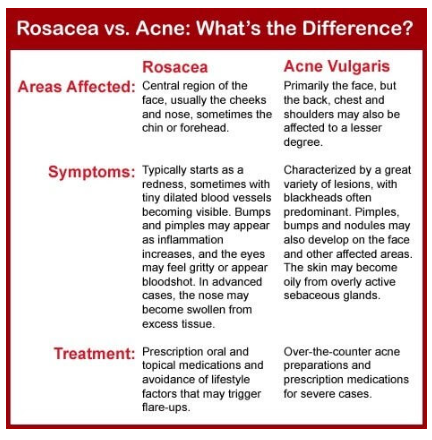Acne Awareness Month: Part III
Acne or Rosacea? Looks Can Be Deceiving
The bumps and pimples associated with rosacea are often cause for confusion about the skin condition because they mimic typical acne. In fact, subtype 2 (papulopustular) rosacea is associated with pimples and bumps in addition to flushing and persistent redness.
Unsurprisingly, papulopustular rosacea has been referred to as “acne rosacea,” reflecting the belief that the two conditions were related. Although it is now known that there is no connection between acne and rosacea, this has led to confusion and rosacea sufferers frequently mistakenly self-diagnose themselves with acne. Because the two disorders are distinctly different and require different treatments, patients should exercise caution with acne medications as they may cause worsening of rosacea symptoms.
It is common for patients to experience more than one rosacea subtype, of which there are four, and even experience other skin disorders in addition to their rosacea. Generally speaking, the rule of thumb for distinguishing between subtype 2 rosacea and acne vulgaris is that comedones (blackheads) occur only in acne, while only persistent redness and flushing are seen in rosacea. Refer to the comparison below to identify the differences with these two conditions. As always, patients should seek a dermatology consult for proper diagnosis and treatment recommendations.
Courtesy of National Rosacea Society

